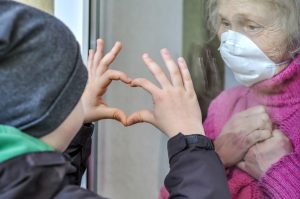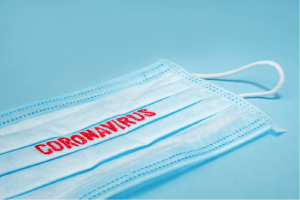COVID-19 Risk Factors – Environment

There are certain environment factors that put particular groups of people at higher risk of experiencing severe disease if infected by SARS CoV-2. Click here for an overview.
Demographics and underlying health conditions are two major categories, but there are other factors that increase your risk.
These include:
This article explores how environment can increase your susceptibility.
The situation you find yourself living or working in might increase your risk of becoming infected with SARS CoV-2. You might only experience mild symptoms, but if you are high risk for any other reason, you might find yourself struggling with the complications of COVID-19.
Living in a care facility or nursing home
Nursing home populations are at high risk of being infected by SARS Co-V-2 because by their very nature they contain a high proportion of individuals living in close proximity to each other. This population is also more at risk of experiencing severe or chronic symptoms once infected because of their age and the fact they are likely to be living with underlying chronic medical conditions.
To protect all who live and work in nursing homes and care facilities, regular cleaning and disinfection of communal areas, appropriate social distancing, and self-isolation measures where required, should be implemented. It is important that carers, who may be low risk themselves, also take the necessary precautions to protect those residents who are considered high risk. This includes social distancing as much as possible and wearing appropriate Personal Protective Equipment (PPE).
Working in a healthcare environment
Those who work in a hospital or any other medical facility may be at greater risk of coming into contact with the virus as they are more likely to have regular exposure to patients who have tested positive. If you fall into this category take sensible precautions; use PPE when at work, such as masks, a clinical coat/suit and gloves, and ensure that it is changed on a regular basis. Outside of work, take steps to protect yourself and those around you who may be vulnerable to infection. Use best practice for maintaining hygiene, including removal of potentially contaminated clothing whilst still at work, washing hands with soap and water, and disinfecting any other materials that may come in contact with others outside the hospital setting.
Contact with an infected or exposed individual/environment
Being in close contact with someone who has tested positive for COVID-19 puts you at high risk of infection. It is expected that over 90% of individuals who have been in contact with the virus will show mild or no symptoms of being infected. However, it remains unclear whether asymptomatic individuals, or those who have not yet shown symptoms, can transmit the virus.. This means that if you do fall into a high risk category, you should take extra care to protect yourself from possible sources of infection.
Current data suggests that the length of time the virus remains in a person’s body following infection (the incubation period), is up to two weeks. This means you should self-isolate for at least 14 days from the time of potential exposure (Day 0) to minimise the risk of passing the infection to others.
How long SARS CoV-2 survives on surfaces has been a topic of great interest over the past few months. The virus is considered to be more stable on plastic and stainless steel (still detectable 72 hours after exposure) than on cardboard and copper. The virus lasted less than 24 hours on cardboard and less than 4 hours on copper. The most important thing to remember is that SARS CoV-2 can be killed by cleaning with common household disinfectants.
Sources:
- Doremalen, Neeltje Van, et al. “Aerosol and Surface Stability of SARS-CoV-2 as Compared with SARS-CoV-1.” New England Journal of Medicine, vol. 382, no. 16, 16 Apr. 2020, pp. 1564–1567., doi:10.1056/nejmc2004973.
- “People Who Are at Higher Risk for Severe Illness.” Centers for Disease Control and Prevention, Centers for Disease Control and Prevention, 14 May 2020, www.cdc.gov/coronavirus/2019-ncov/need-extra-precautions/groups-at-higher-risk.html.
- “Q&A On Coronaviruses (COVID-19).” World Health Organization, World Health Organization, www.who.int/emergencies/diseases/novel-coronavirus-2019/question-and-answers-hub/q-a-detail/q-a-coronaviruses.










